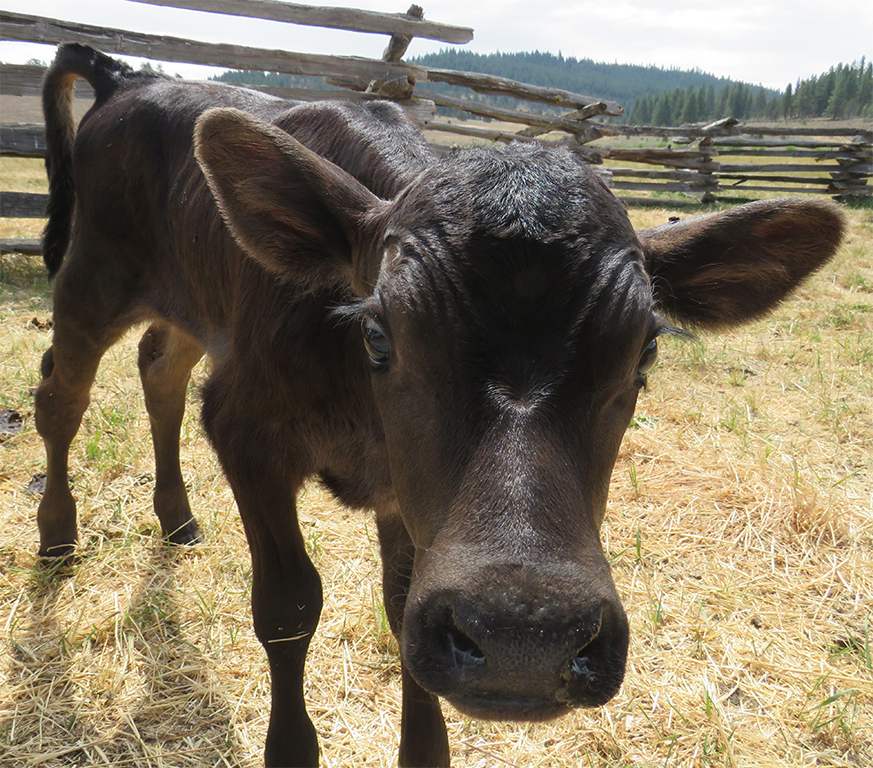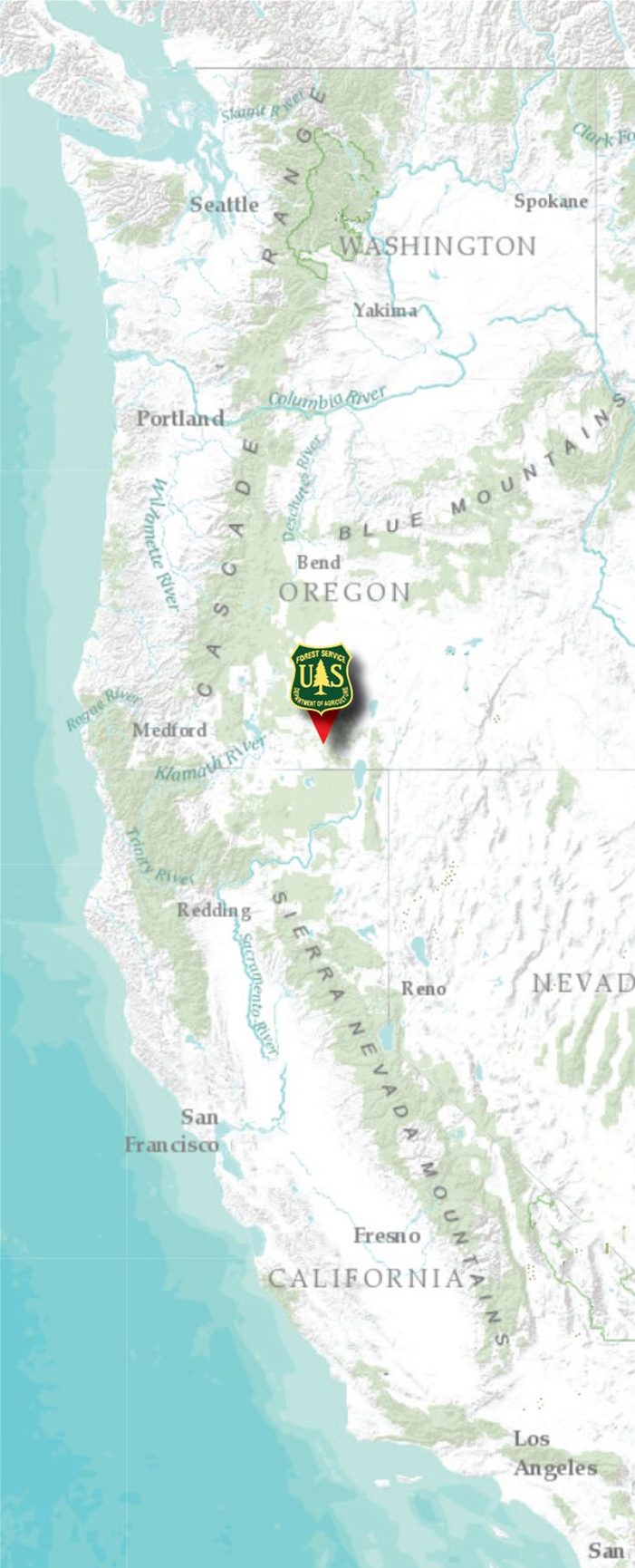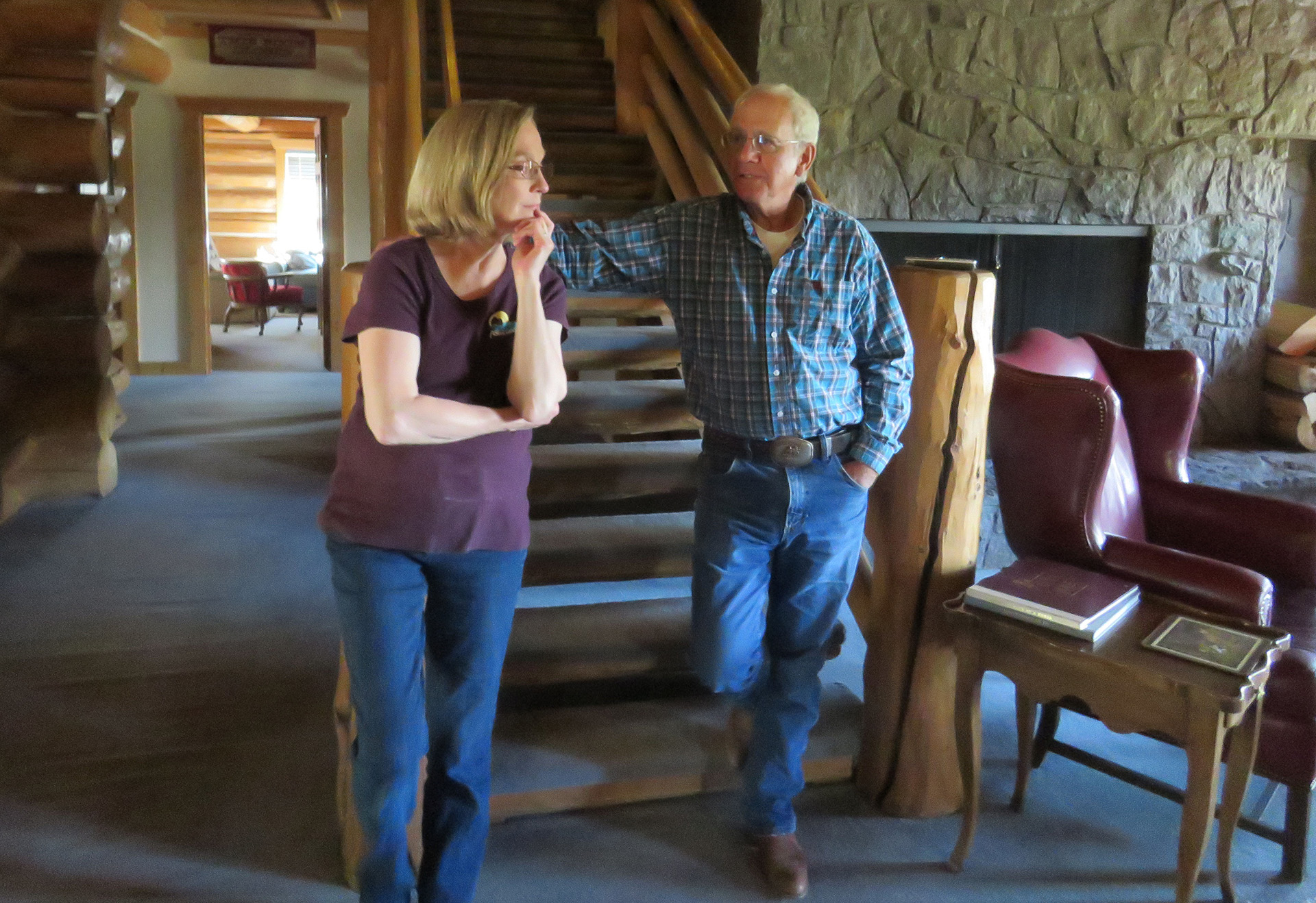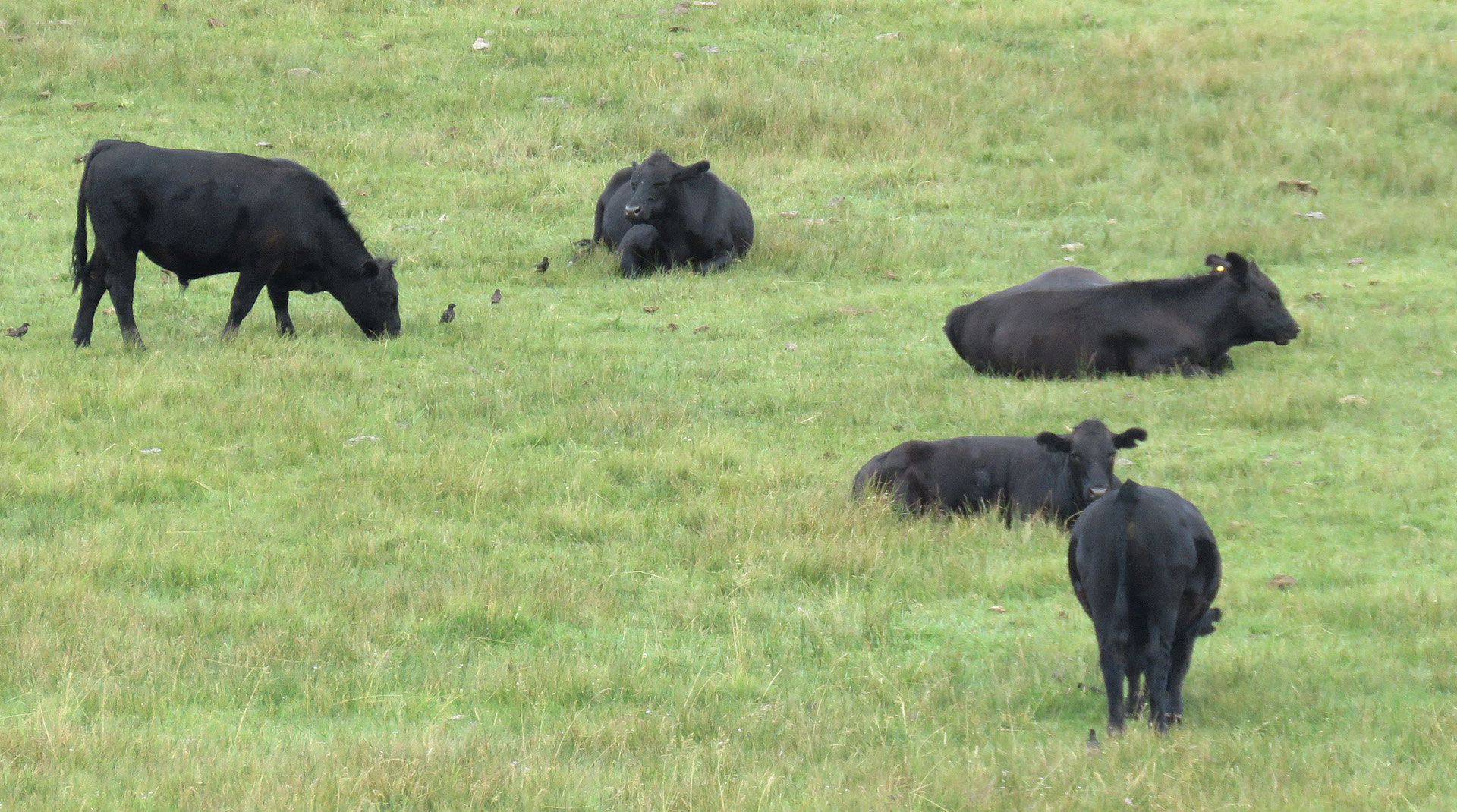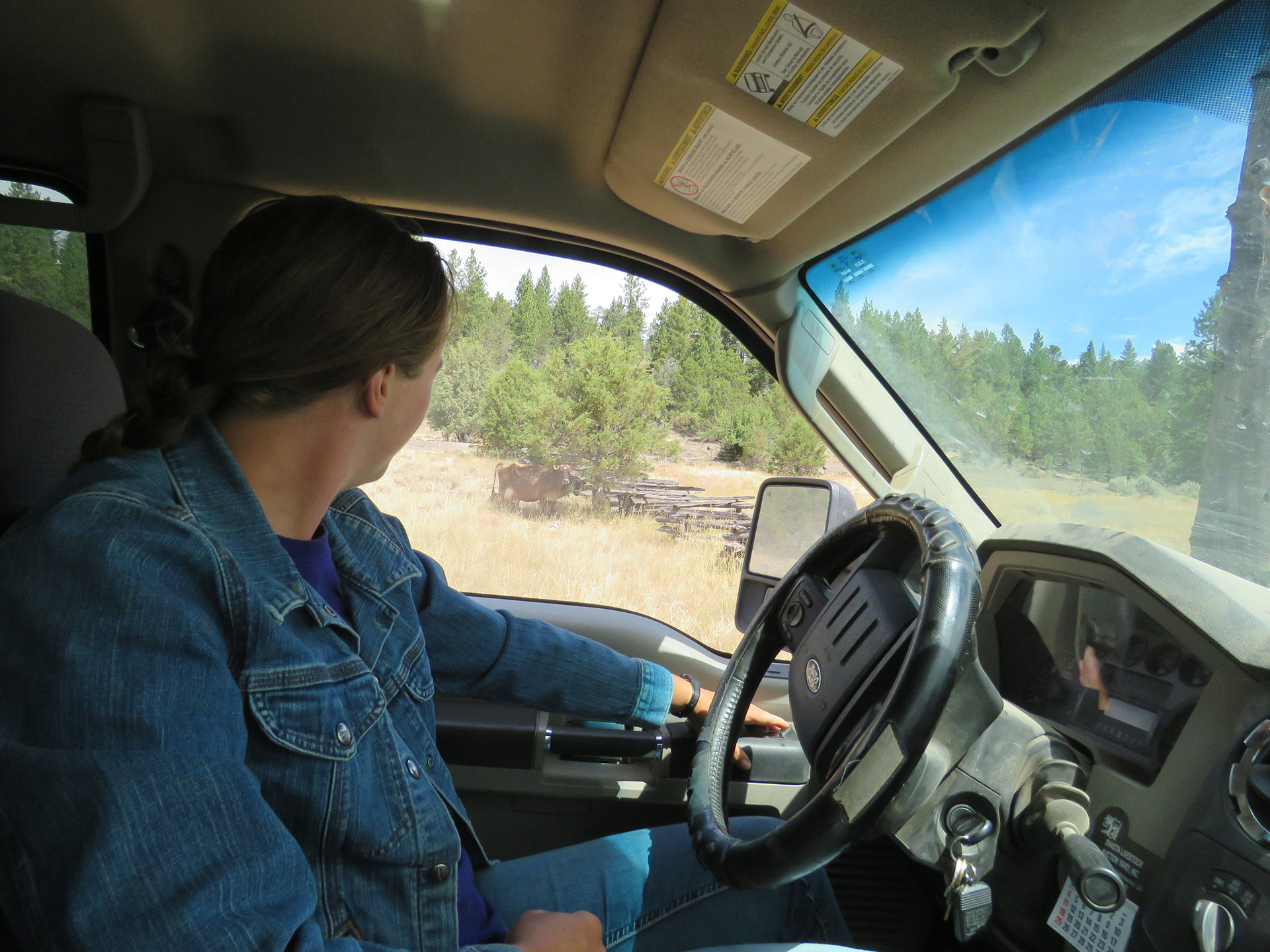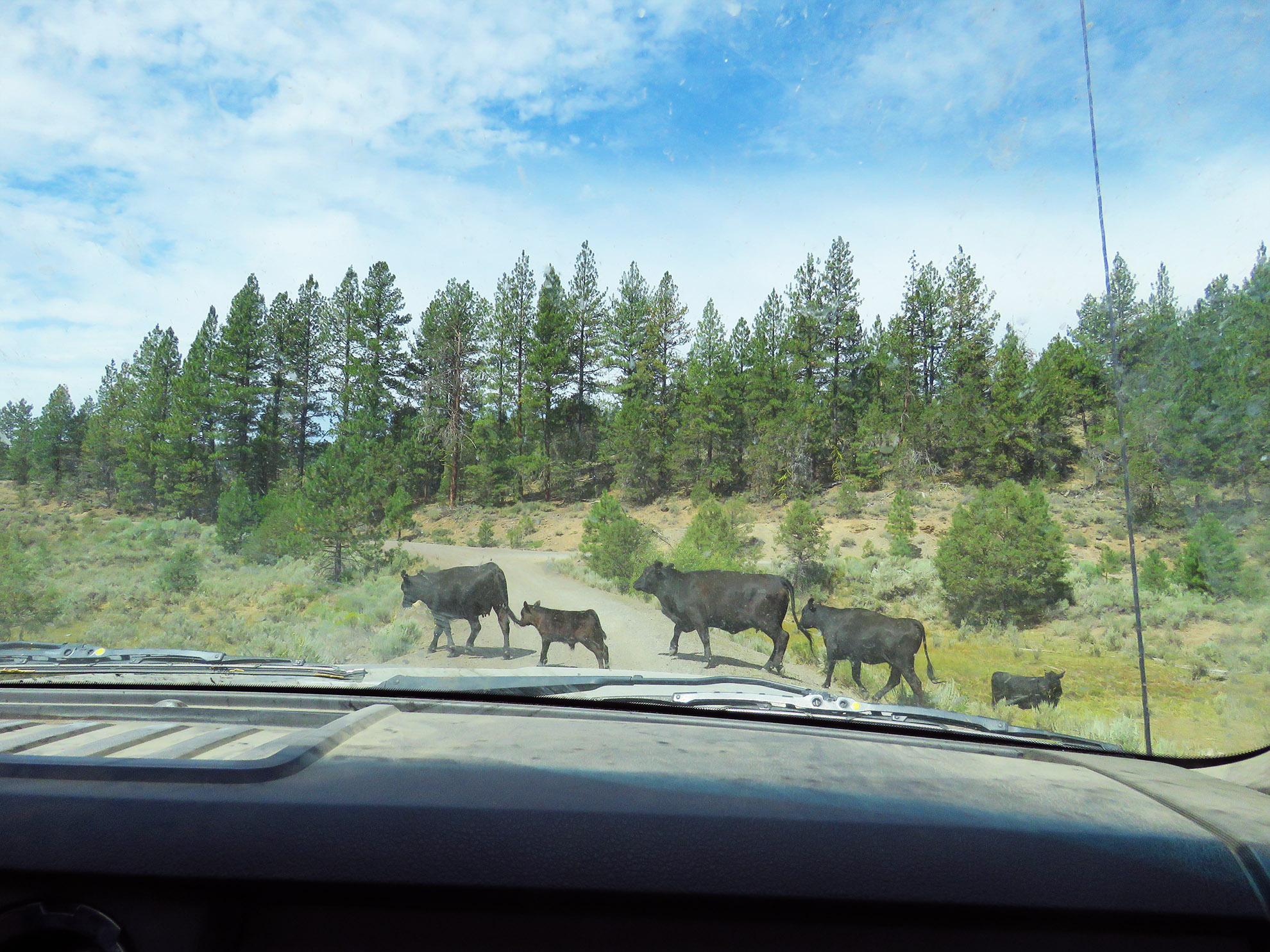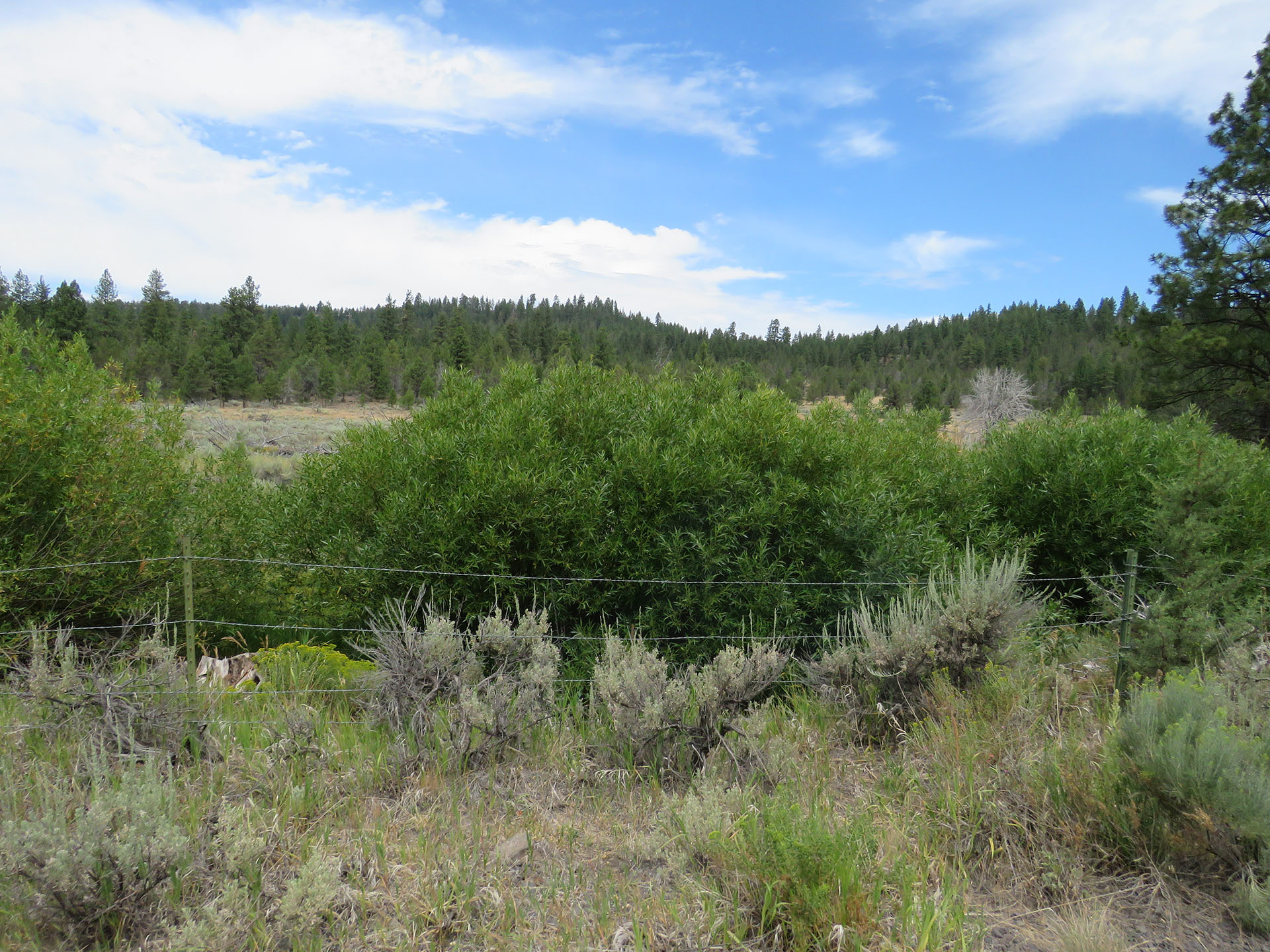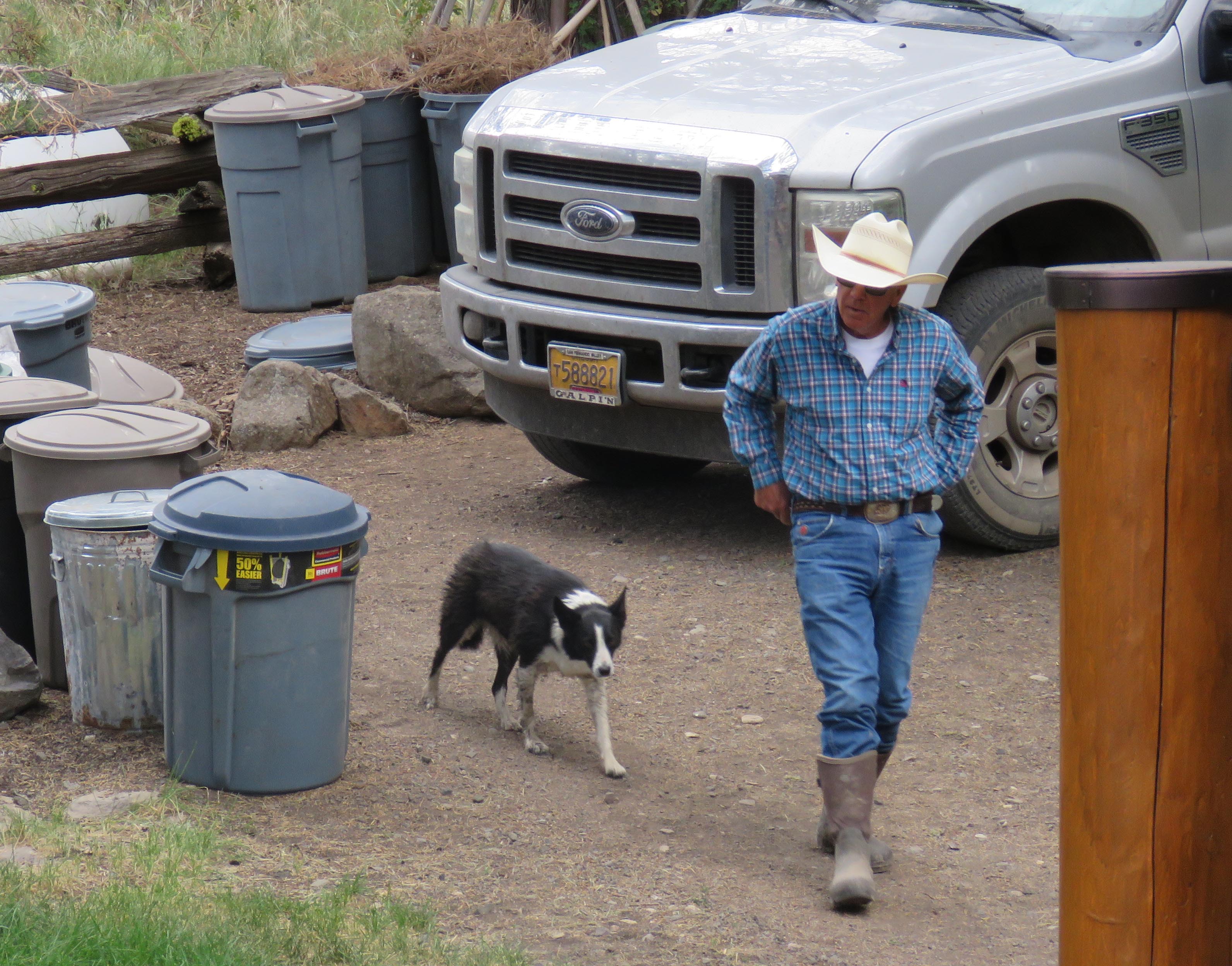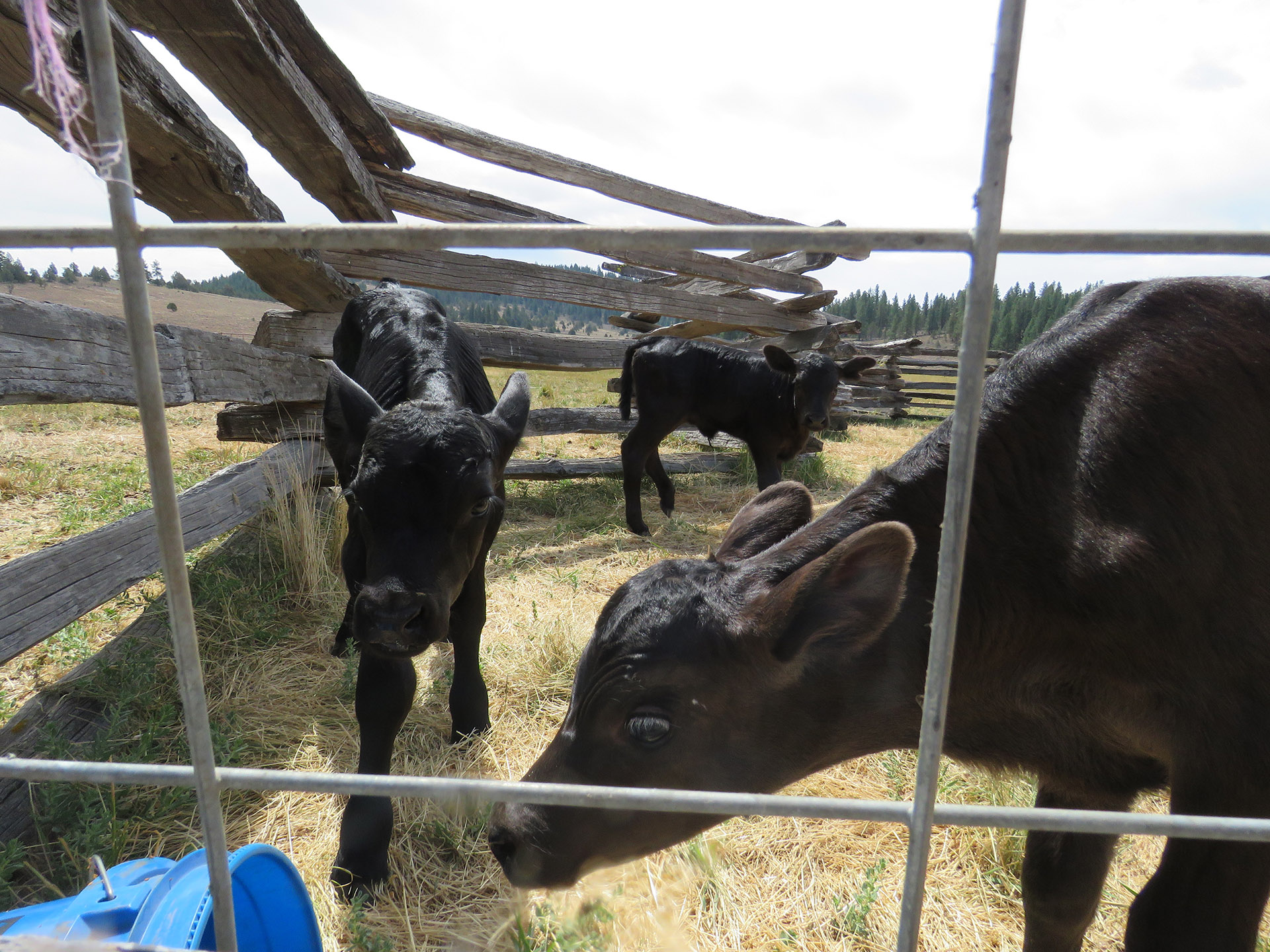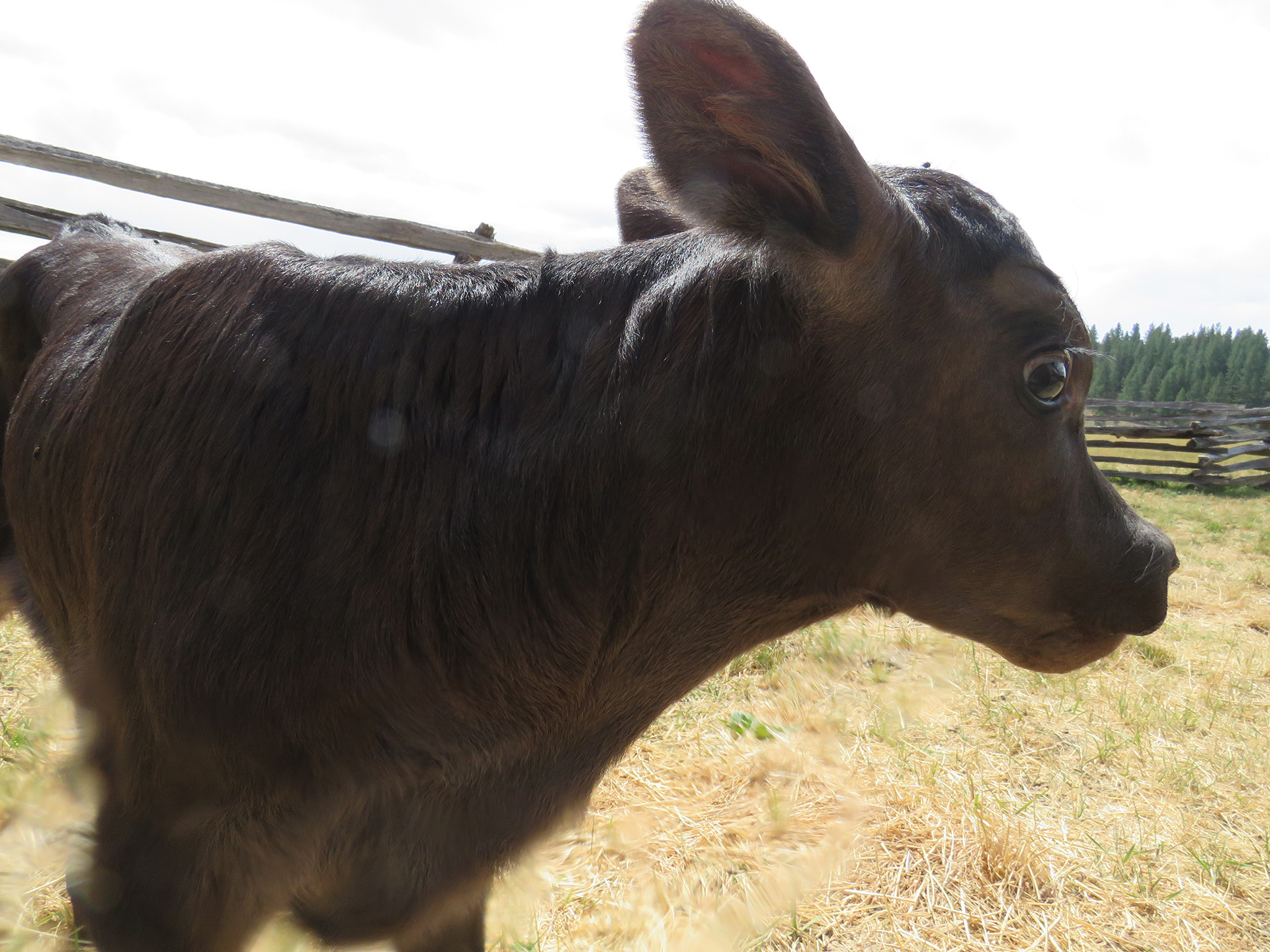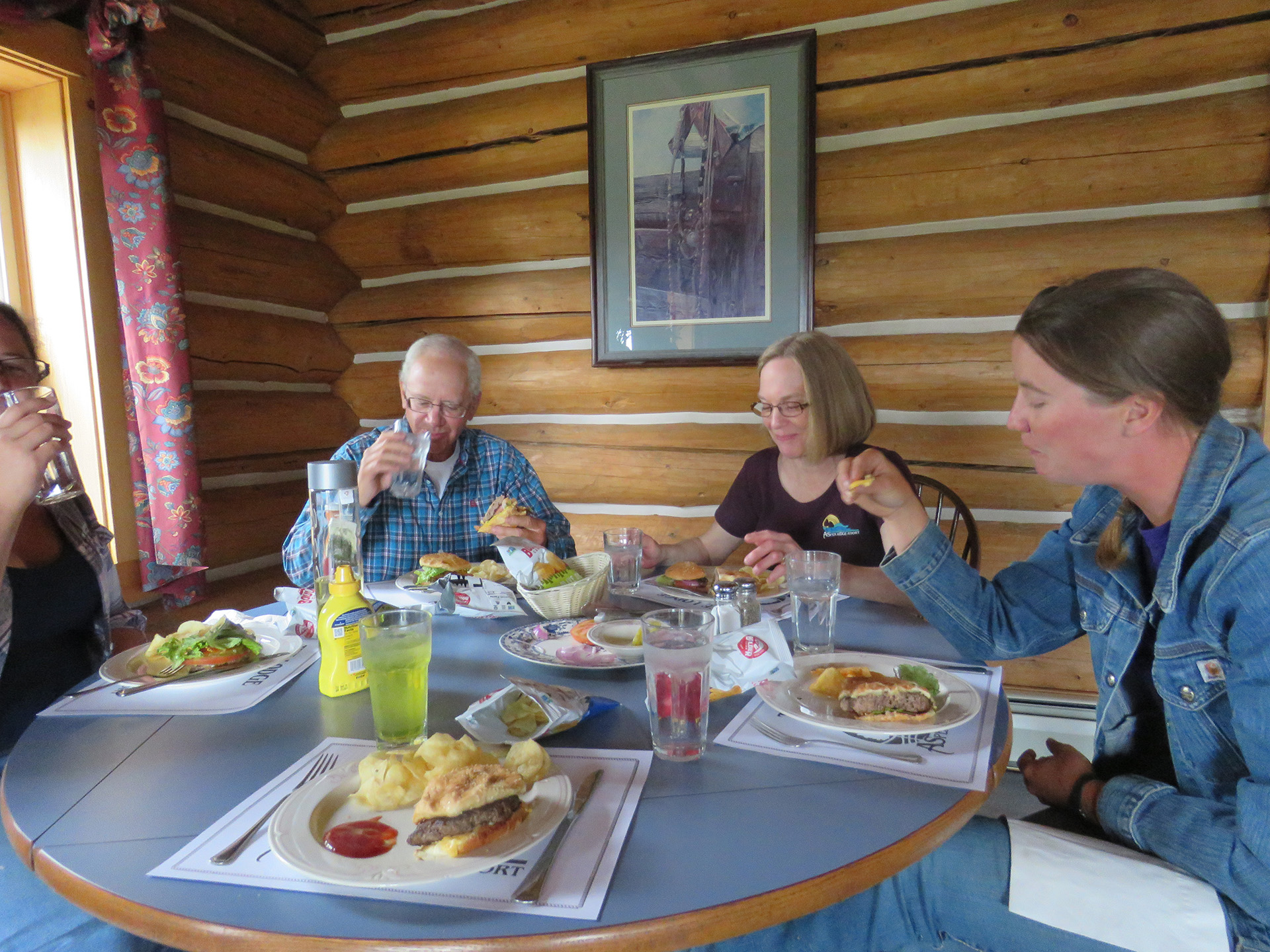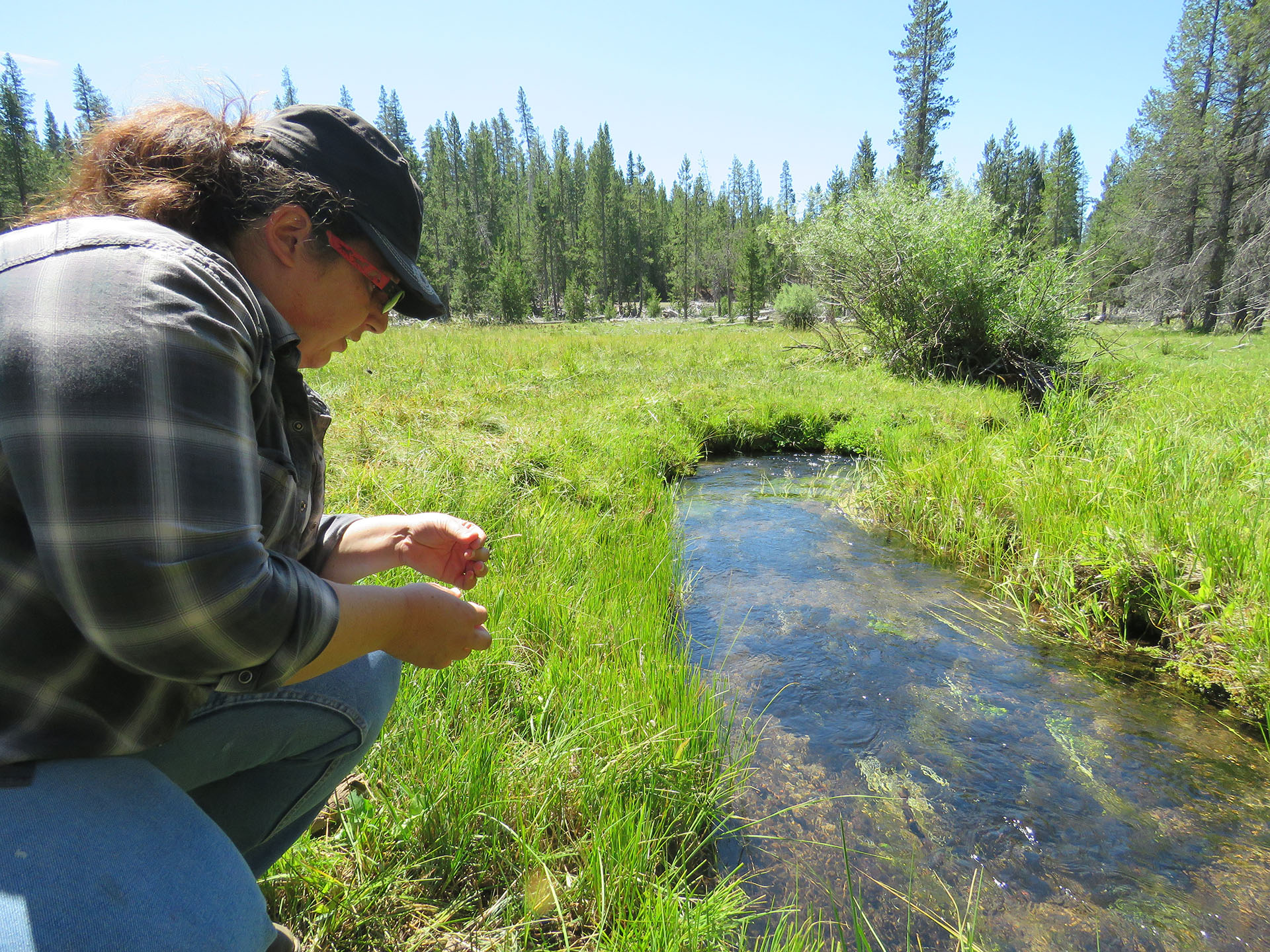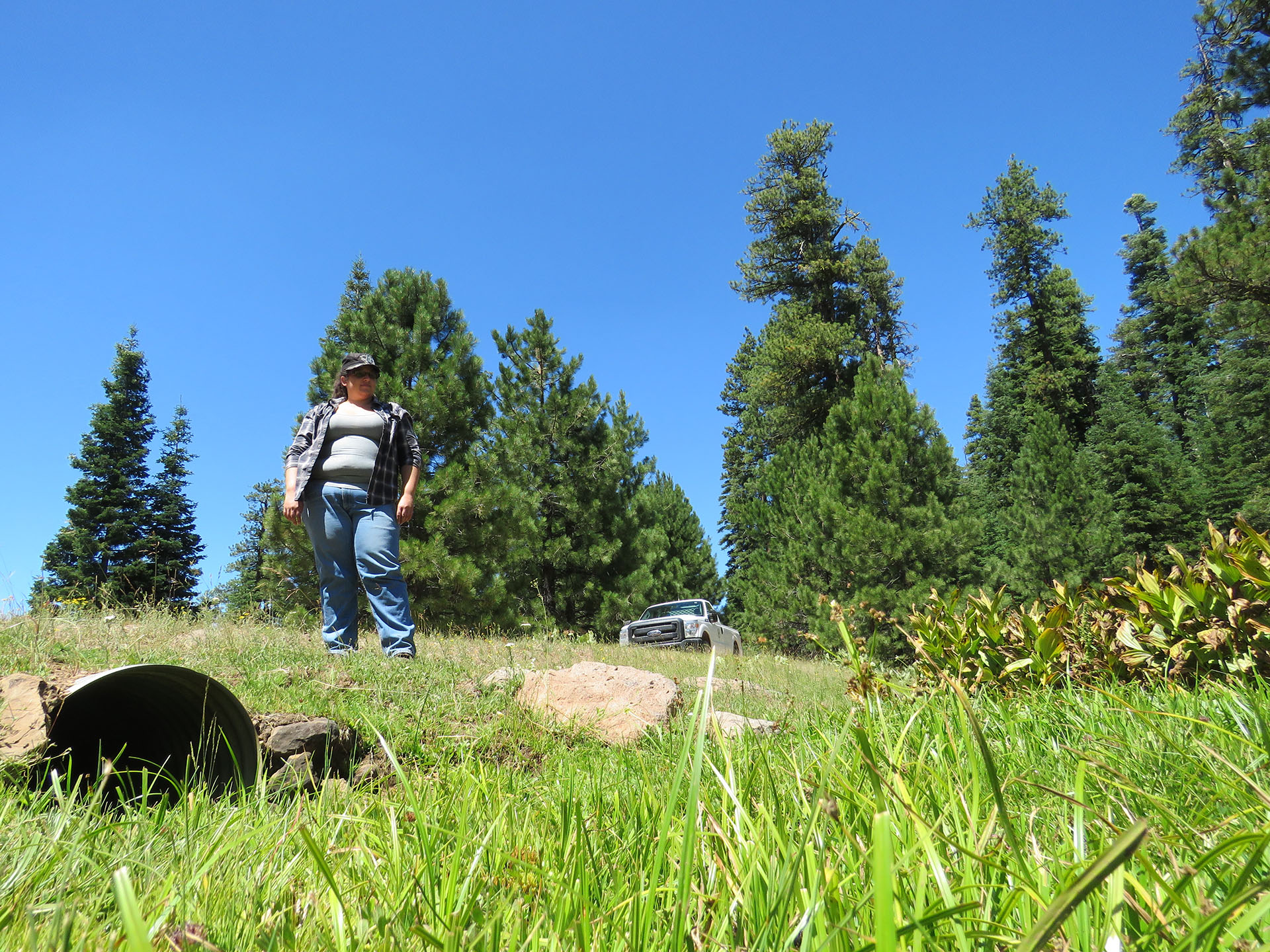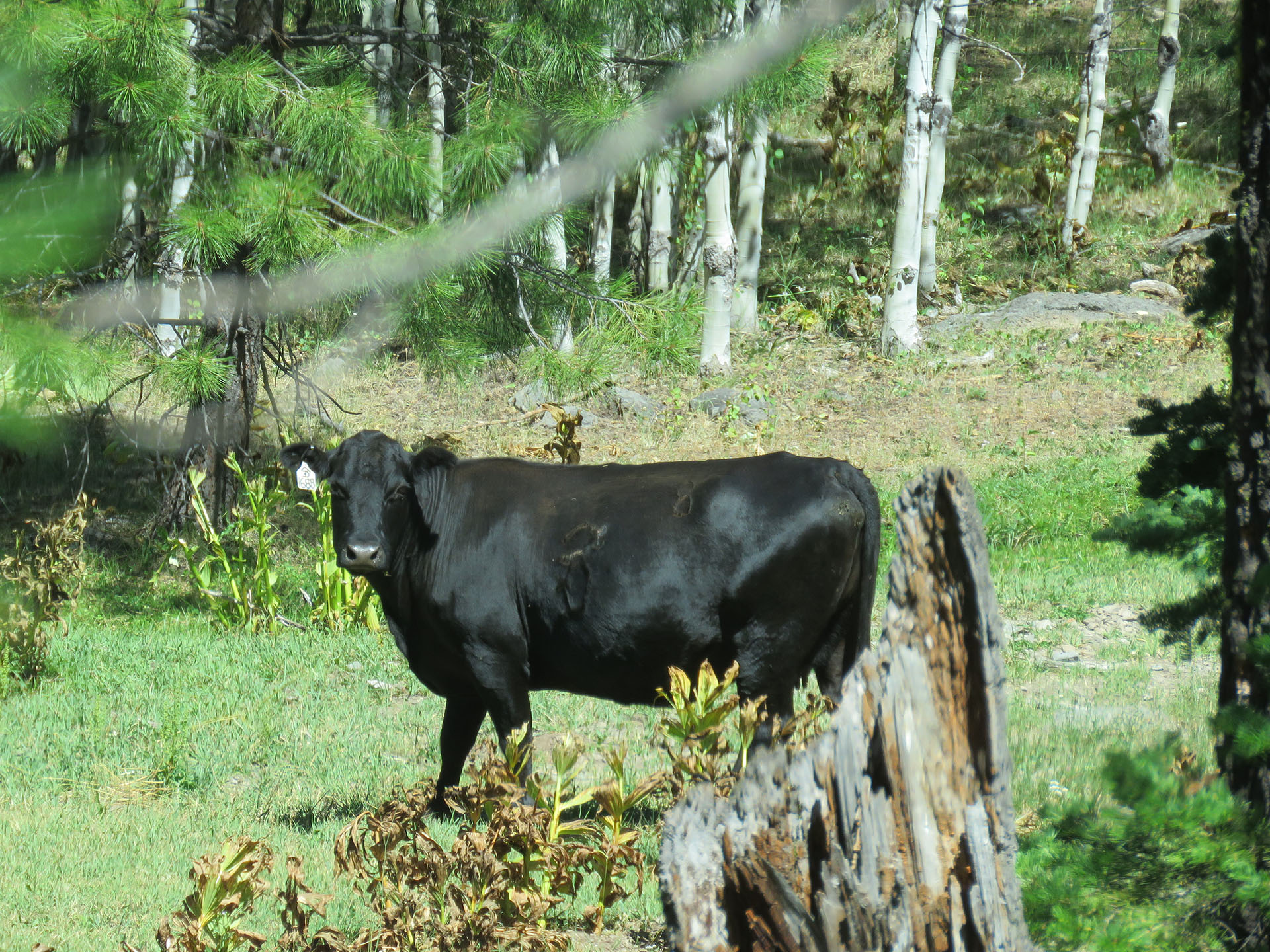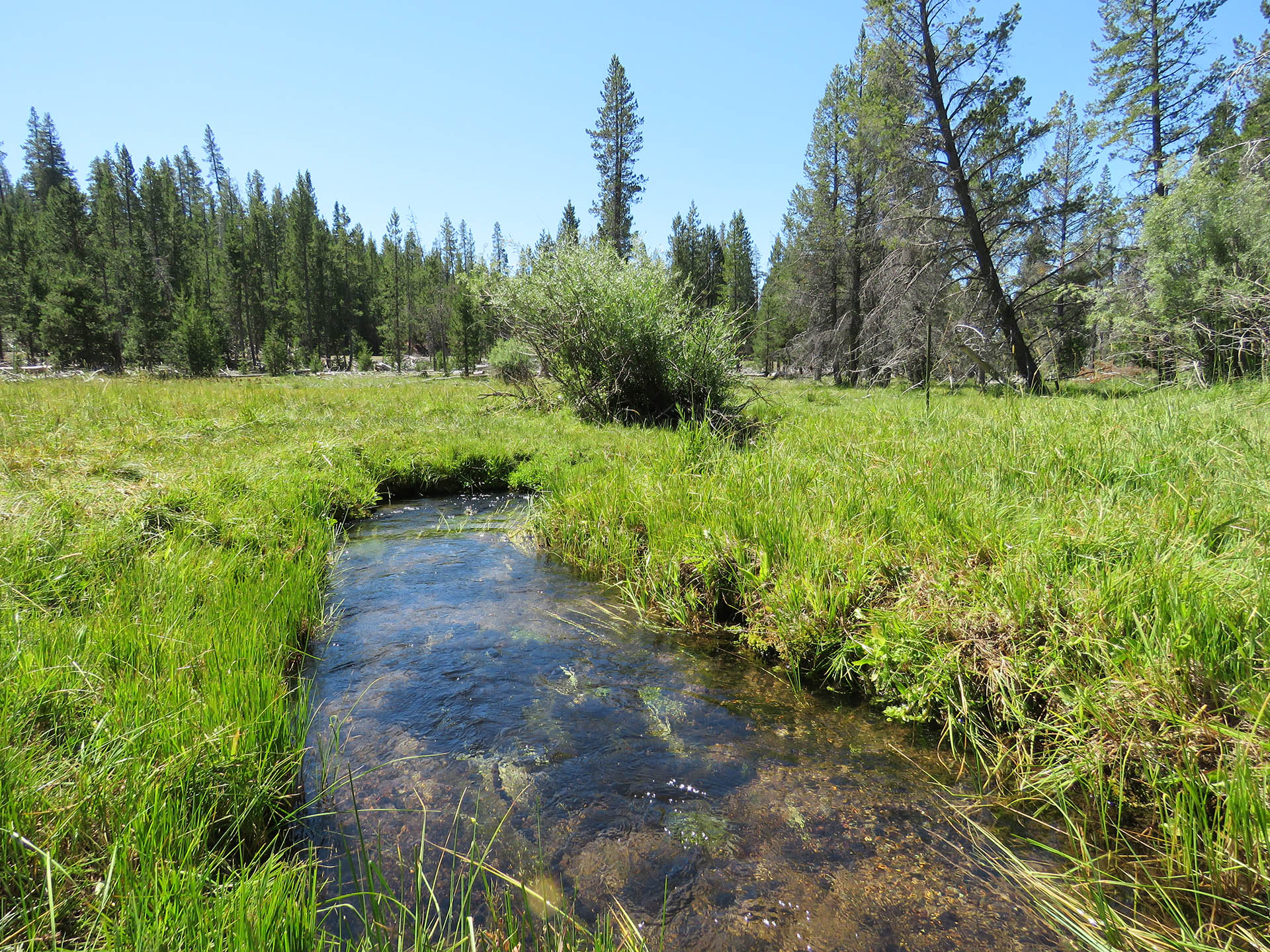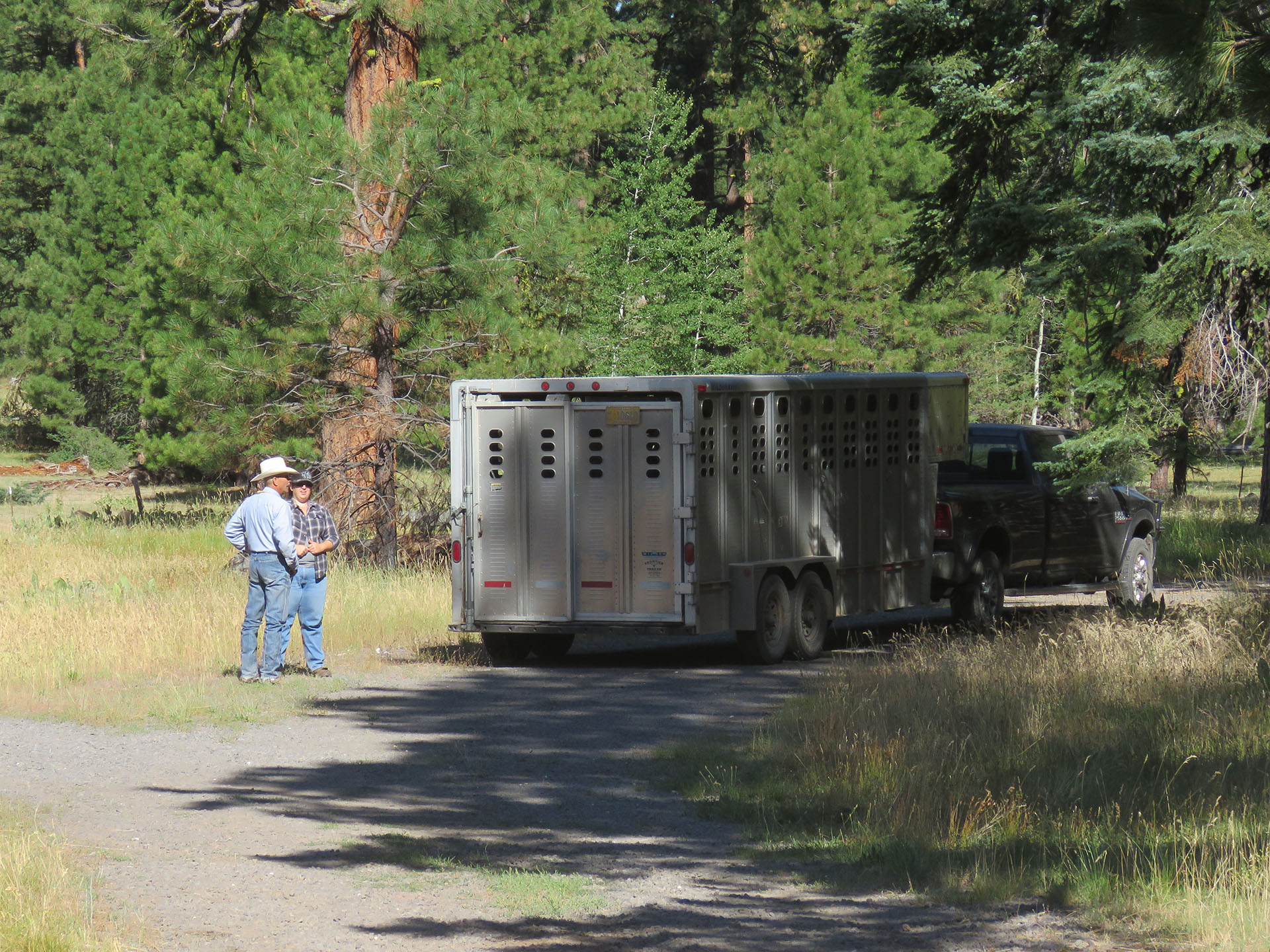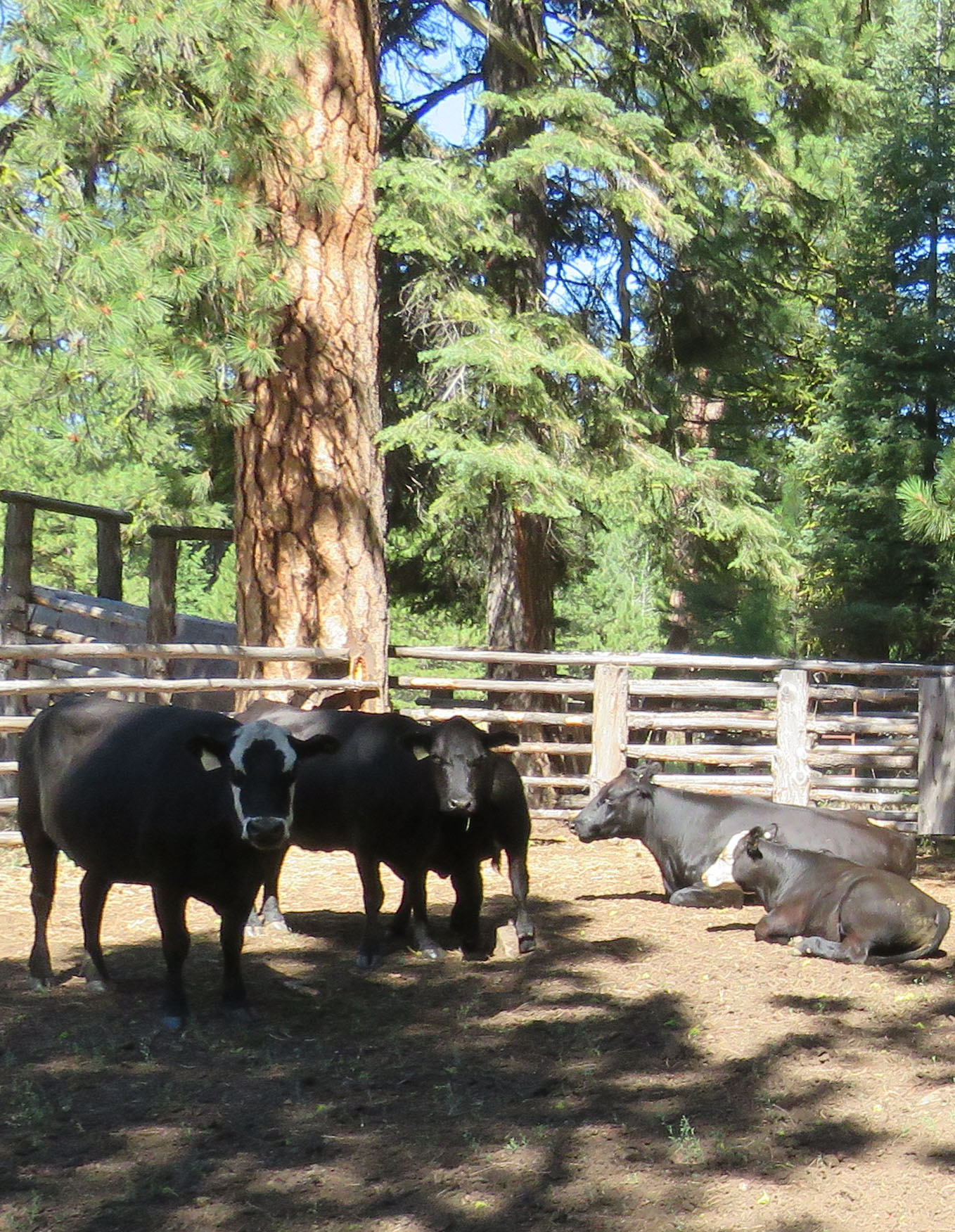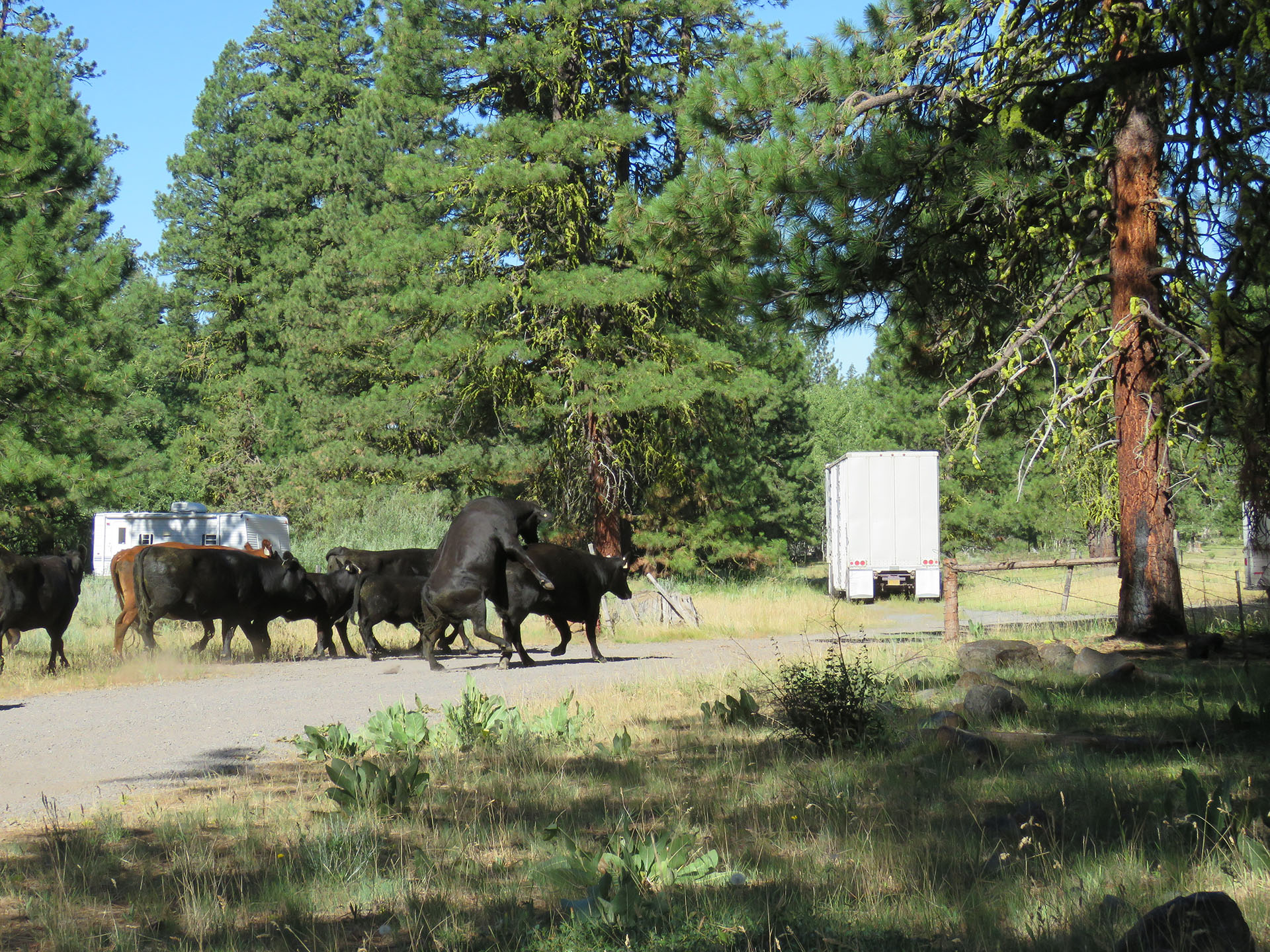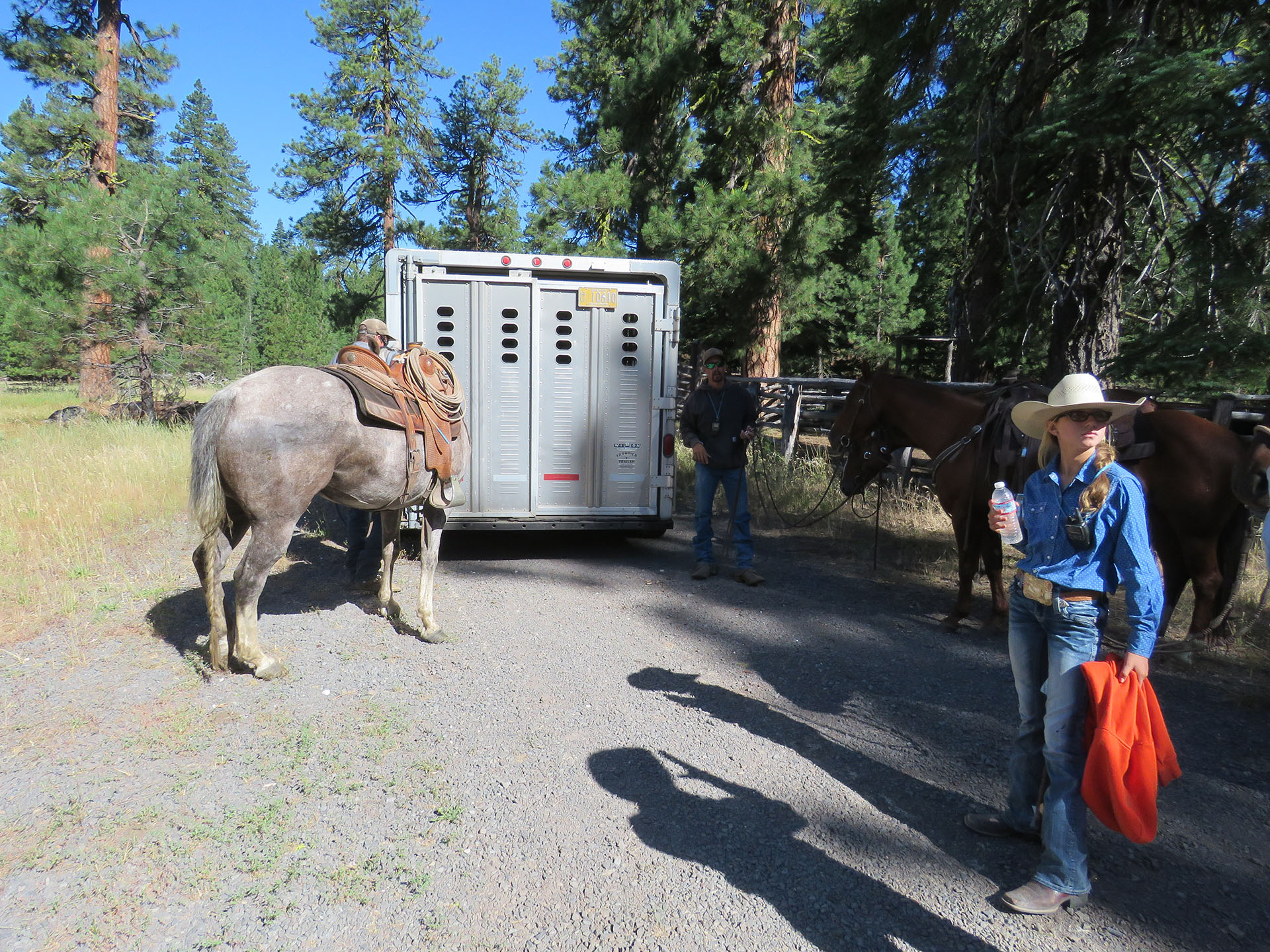From Forest to Fridge
How Fremont-Winema bred cattle are helping to feed America
The story of good beef is the story of America. It’s the story of hard work, livelihoods and how we are all tied to the land. It’s the story of interdependence; of rancher and truck driver, feedlot and farmer. Of gas stations and grocery stores, grain elevators and railroads; it’s part of the fabric and story of every city and small town that has, or has ever had a clothing store, a post office or a pharmacy lining their main streets.
But like any good story it has to start somewhere… and this particular story starts on a National Forest.
High up amongst the trees where Oregon reaches down to meet California and Nevada, the Fremont-Winema National Forest has long been home to a history of cattle and cattle ranching. In the lush meadows where the grass grows green and the waters flow clear, generations of mother cows have been raising and nurturing their babies to grow up big and strong. From spring into summer and on through late fall, beef cattle belonging to forest permittees like Steve Simmons and Eric Duarte can be found all throughout our National Forests, munching on grass and grazing between the trees.
“We’ve been up here a long time,” explained Fishhole Creek Ranch owner Steve Simmons from the deck of his privately owned Aspen Ridge Resort. “We’ve had this ranch since ’75, and we had a ranch prior to that in a town called Beatty, which is just west of us.”
Looking out at an expanse containing a couple hundred head of happy cattle, Fishhole Creek Ranch and Aspen Ridge Resort are surrounded by thousands of acres of prime meadows and ponderosa National Forest land just outside of Bly, Oregon.
“The ranch is about 4,000 acres, deeded, and then we’ve got a little over 11,000 acres on a Forest Service allotment that adjoins the property,” Steve stated as his wife Karen worked diligently to answer the phone and to take guest reservations. “We’re off grid and we’ve been running cows on the range for over 40 years,” Steve said, “And over the years we’ve kind of fine-tuned it; our cattle our basically a 3/8, 5/8 cross – 3/8 Gelbvieh and 5/8 Angus.”
A continental breed originally from the Bavarian region of Germany, Gelbvieh cows are known for being able to put on more muscle, while British breeds like the Angus are known for traditionally finishing with more marbling. With a hybrid set of cattle known more commonly as Balancers, they tend to do really well in that they mature earlier than most Continental breeds while still maintaining a moderate size.
“Our cows aren’t huge,” Steve said as he motioned out to the sea of cattle that extended off onto the horizon. “We calve our heifers at age two; they’ll get weaned coming out of California in May, and then they’ll go into a feedlot here sometime in early September. They’re finishing under or around 20 months of age which is pretty amazing at 1,300, 1,400 and 1,500 pounds, and last year our steers were graded 30% prime and over 66% choice. Our heifers were all 100% choice or better, so we’ve been raising cattle that perform well and yet are also very maternal.
And we’re able to that just because of the genetics.”
Helping Steve and Karen to manage the day-to-day operations of the herd, Ranch Manager Larisa Robertson can be found doing anything from milking cows to checking up on the fences, but her favorite is checking up on the welfare of all the new, young cattle.
“I love it,” Larisa beamed as we drove up and around the allotment on our way to viewing an unmanaged exclosure. “I like the cow-calf deal. There’s some guys that just do the yearlings; they buy a calf as an older calf, they raise it for a while, get it heavier and then sell it. That’s a yearling operation – they’re buying calves that are already weaned, they’re not dealing with the birthing and the babies part,” she explained.
“But I like that part of it, I like the cow-calf deal,” she continued, “because you see a cow, and she has a little calf, then you save that heifer calf and now she’s turned into a cow, and she’s having her own little babies!
I love it,” she exclaimed.
At the unmanaged exclosure, a fenced-out riparian area with wide streambanks and heavy erosion sits just out of reach for the cattle and their young calves.
“Up here we have what is called an exclosure, and it’s a mess,” Larisa explained as we surveyed the wild and often brush filled habitat. “It hasn’t seen cattle in decades.
But over here, if you get out and look, we’ve got stable streambanks. We’ve got aspen, there’s willows and the cattle are on it, and it’s all taken care of.
It’s a management tool,” she said while pointing out all of the lush and healthy habitat that was located on our side of the fence.
“Just on the other side of that fence there is the exclosure, and as you go along you’ll see the streambanks aren’t very stable and it’s definitely falling apart a little bit. It’s just brushed out, you know? You’ve got your creek that’s gotten real wide in places, the banks are falling off and it’s kind of a mess.
So it’s definitely one of those things,” she went on to say, “where cattle, if done properly, can be a really good tool for managing the range.”
Back at the ranch, Steve, Karen and Larisa took time to explain what was going on with the small group of bottle calves who didn’t appear to have a mother.
“I’ve got a couple of calves and one had been on a bottle,” Larisa said as we sat down to get ready for lunch. “It was real friendly, but the other one had been stealing from other cows – it had been a twin, and it had been stealing for a week and was making it, but it was rough.”
“You’ve got these cows and all of these calves out there, and then you’ve got some cow who ends up with two calves,” Steve said as hamburgers cooked away in the kitchen the next room over.
“And the cow doesn’t know she’s had two,” his wife Karen lamented. “She doesn’t necessarily know if she’s had twins; all she knows is if she’s being suckled or not.”
“So some guys will bring twins in to smaller pastures and then feed the heck out of them, because she’s been milking so much, trying to keep two calves alive,” Steve went on to explain as his calves grazed happily outside.
“A lot of commercial beef cows can’t do that,” he said, matter-of-factly. “It’s too hard on them, and they lose weight because they’re milking as hard as they can milk. So they need to be fed special, and it just ends up being a nightmare for them.”
“But it’s a live, little calf, and it’s… you know,” Larisa started to say.
“Yeah,” Steve agreed whole-heartedly. “So when we had six of them on the bottle, I was like, ‘Let’s go get a Jersey milk cow.”
“Most cows won’t accept other calves,” Larisa said, speaking from experience.
“They’ll say, ‘This isn’t my baby. I smell it, and it smells wrong.’
And then they’ll kick it off.
But my Jerseys have just kind of figured out the program, and with each one of these calves she’s just like, ‘I guess it’s mine, because it’s sucking!” (laughter)
“It’s just perfect,” Karen exclaimed as we fixed up our plates.
“All the cows are happy, and they’re raising calves that now get to grow and be part of our regular herd.”
After lunch, Forest Service Rangeland Management Specialist Ria Suarez is eager to get back to the field so that she can show me more of what good grazing should look like.
“I set up this monitoring site back in 2017,” Ria said as we made our way to the middle of a picturesque and grass filled meadow.
“There’s different requirements for types of riparian areas,” she explained, “and the grass tends to grow at a certain height.
So when the cows come out here,” she said, “they have a certain amount of take, which is how much of the grass they’re actually supposed to be eating.
For instance,” she said while bending down to take a closer look at the grass,” if you have a certain type of grass that grows between 20 to 36 inches and in the riparian area the allowable stubble height is 7 inches, then that’s going to be a pretty good amount of take while still leaving enough back for wildlife.
“So we come out here and we really look closely for things like that,” said Ria as she wiggled her fingers through the cool, clear water. “We look at the stubble height, the streambank alteration, the erosional depositional – which means ‘what side of the stream is the erosion depositing on,’ and we look at the woody browse,” she explained while shifting her attention to the stand of young willows in front of us.
“Stubble height is a really good indicator of overall use, and streambank alteration just means that we’re checking for erosion by looking to see if there’s been any fresh hoof prints that might have damaged the ground,” Ria added, pleased with what she was seeing in front of her.
“The erosional depositional is pretty straightforward; ‘Is it depositing, or is it eroding? And when it comes to the woody browse,” she continued, “we’re looking to see if they’ve been eating on any of the young aspen or willows.”
So we’ll take a closer look,” she stated, inspecting the ends of the willow branches. “We’ll look at the ends of the willows, and we’ll check to see if they’re being nipped or just pulled.
Because cows, when they eat, end up using their tongues to just rip the leaves off of whatever they’re eating,” she said. “It’s just how they eat. They wrap their tongues around whatever it is that they’re eating, and they just grab and pull.
But deer and elk eat a little differently,” she continued, “and they’ll come in and nip. They’ll eat the leaves, the leaders, and even the whole stems.
They really like the willows,” she said.
“But the cows, on the other hand, they would much rather eat the grasses,” she reiterated. “So if you have a situation where the cattle have been eating the willows then that means there probably wasn’t enough grass to go around, and we’re probably going to have to reevaluate the permit.
Because it’s not just about the health of the cows,” she continued. “It’s for the watershed, the fish, and the deer and the elk too.
It’s for everybody,” she said as we headed back to meet with our next permittee.
“And we really want them all to be healthy.”
Heading north, Ria has a rendezvous planned with one of the Forests’ permittees; a well-seasoned cattle rancher and auctioneer by the name of Eric Duarte.
“We moved up here 29 years ago,” Eric said with a twang and a slight drawl as his daughter Madison rode up on her horse. “My wife’s from Alturas, so she’s pretty local, and her dad, they’ve ranched there for two or three generations, right there in that very same spot.
In fact,” he went on to say, “as the crow flies my Father-in-Law probably runs his cows on his Forest permit not even 30 miles from here, down in California.
But the permit I’ve got,” he continued, “this starts the 1st of June, and I’ve got a Brownsworth permit down below that starts on the 15th of May.”
“We’re spring calvers and we’ve got 800 cows total, but they’re not all up here,” Eric explained as he opened up the gate for one of his cattle trucks. “We’ve got our own ranch, down by Beatty, and then we’ve got two places leased, in addition to our Forest permits,” he said.
“So we truck back and forth,” Eric continued. “I drive one and Victor drives the other, and then my wife and kids and the hired help, they get ’em all sorted and ready for us and we just haul them in.
It doesn’t take too long,” he added. “We get them all in here in about a week, but that’s not every day. We’ll haul for a day and then we’ll go and push them out so they don’t get all clumped up in one spot, but these cows are getting to know it all pretty well now,” he said while smiling and looking at the now empty clearing.
“The first year we came here they just camped right here, because they thought this is where they had to be,” he laughed while shaking his head. “But now when we turn them out, you could come out here the very next day after we’ve dropped three or four loads and there won’t be a single cow around.
They’ve all got their own little spots and everybody splits up,” he said with a look of satisfaction. “So you don’t have 50 cows camping in one little meadow; you have seven, maybe ten.
And that’s what we really want.”
Running on a 90 day forest permit, Eric’s cows can be found grazing in the upper mountain meadows until right before Labor Day, at which point they’re rounded up for the return trip home before being sold by video auction in November.
“I sell on Superior Video and I’m one of their representatives,” Eric said. “And these calves of mine, half are going to Texas, to the M6 Feedlot that 44 Farms just bought, and the other half are going to Beef Northwest which is based out of North Powder and right here in Oregon.
They’re all GAP certified (Global Animal Partnership) and NHTC, just like Steve’s cattle,” he continued. “They’re non-hormone treated, non-hormone bred and they haven’t had any antibiotics; they’re all natural.
But Steve, he’s a fall calver and we’re a spring calver, so he starts earlier and then goes to California with his cows because where he’s at there you couldn’t stay much past the first day of November.”
In addition to the differences in calving, Eric’s cows and Steve’s cows are also different breeds.
“We use all Black Angus bulls that I buy from 44 Farms, down in Texas, and from Riverbend Ranches out of Idaho Falls,” Eric said. “There’s a few guys locally that I’ll buy a couple, three or four bulls from, but most of them come from those two places.
And then we sell on the open market.
But those two places, they like to buy and come support us a the sale barn,” he continued. “With 44 Farms they’ve got a program called ‘Prime Pursuits’ where they only buy from their own customers.
They’ve got the Wal-Mart contract now, so all the beef that will be in Wal-Mart is going to come from 44 Farms,” Eric explained. “And it’s going to be all natural, GAP certified and all of that other good stuff.
And it’s going to be from here, at least some of it will, because there’s quite a few of us around that are using their bulls,” Eric said proudly.
As we conclude our story and head back to the Ranger Station, I can’t help but to think back about all of the people that we’ve met. And while most stories have a traditional beginning, middle and end, I’m not sure this one does.
Because like the Forest Service, the story of beef doesn’t really have an ending. It’s more about the story of rebirth, and of renewal, but most importantly it’s the story of our people.
People like Rangeland Management Specialist Ria Suarez, who go out and check to make sure that the meadows are actually being taken care of. People like Steve and Karen Simmons, who have carved a life, home and successful business for not only themselves but fort their Ranch Manager Larisa Robertson as well.
And it’s the story of people like Eric and his daughter Madison Duarte, who at twelve years old is just stepping into the role of being a leader of the next generation.
So maybe that’s how this story of beef and the Forest Service should end… not with a traditional ending, but with a new beginning.
And with a new generation of ranchers to help us tell the tale.
